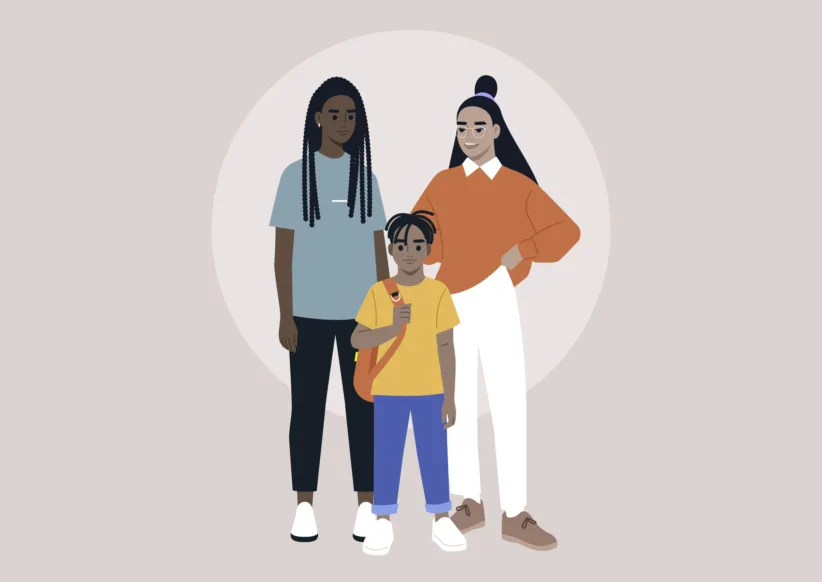Math
tutoring helps students master algebraic equations. Violin lessons can make you
a virtuoso. Little League practice bolsters teamwork. But what can a kid do to
acquire a more basic, but less tangible skill—becoming a productive and
compassionate member of society? Volunteer!
Volunteering
is one of the best ways for young people to connect with their community.
Whether kids and teens volunteer with peers at school, start their own project,
or follow in mom and dad’s charitable footsteps—it’s never too early to start fostering
a do-good spirit.
“Volunteer
work exercises kids’ empathy muscles,” says Christopher Caruso, Executive
Director of generationOn, a national volunteer organization with a youthful
slant. What originally began in New York City as the non-profit Children for
Children, generationOn was created to give younger kids the opportunity to give
back to their communities. Now part of the hefty Points of Light Institute
volunteer network, generationOn works with schools, businesses and community
organizations to form kid-oriented volunteer clubs as well as offer hands-on
opportunities.
Where to
start? It’s all about your child’s individual interests. “A kid is more likely
to be inspired if it’s an issue they care about, or that fits in with their
world,” Caruso explains. “Start with, what is that child passionate about?
Let’s say it’s poetry or music. How do you share your love of music or your
gift and passion with others?”
With
projects that involve collecting or donating possessions like toys, even little
ones can get into the giving spirit. “If you think about birthdays and
receiving presents and going to the library to get books, then you can think
about kids who don’t have access to those things and how you can help,” Caruso
suggests, putting things into perspective.
Caruso
also says that younger people respond well to projects that involve animals.
Ollie’s Place, a cat adoption center in the East Village, normally accepts volunteers 15
years and older. But through August 30, Ollie’s is offering a special “Kitty
Kamp” for whisker lovers ages 6–10 years who are interested in learning more
about shelter cats. The American Society for the Prevention of Cruelty to
Animals (ASPCA) and Bideawee also accept volunteers 16 and older. If your tot
is too young to clean a cage or take a mutt for a stroll, she can still collect
pet supplies and donate them to local shelters.
For older
kids, deeper engagement with a project helps to grow interest and further
dedication. “Operation Chicken Soup,” a program that teaches tweens and teens
about hunger-related issues in NYC and beyond, takes place at The Jewish
Community Center (JCC) in Manhattan. With a cheery demographic of 20
to 30 tweens and up to 60 high-schoolers, both crews cook meals for the West
End Intergenerational Residence, the Council of Senior Centers and the B’nai
Jeshurun Homeless Shelter.
“I think
it’s really important when you’re doing a program like this to get the message
across as to why you’re doing it,” says Yael Gavronsky, Director of Teen &
Tween Programs at The JCC. “We have them reflect on the issues, and ask if they
have any family members who have ever been homeless or in need.”
Plus, the
participants love to cook. With the help of a certified chef, they whip up everything
from pizza bagels to Mediterranean meals. Teens sometimes even help the tween
group with cutting vegetables or supervision, and great bonds have been born
over soups and salads. “Some of the kids meet their best friends in these
programs,” says Gavronsky.
Age restrictions
got you down? While some spots like hospitals and homeless shelters require
volunteers to be over the age of 18, don’t let that be a discouraging factor.
When The Hewitt School student Harley Sherwood, 15, started collecting prom
dresses for Memorial Sloan-Kettering’s Pediatric Prom for children with cancer,
she was only 10.
After her
grandmother died of breast cancer, Sherwood was inspired to get involved with a
cause. And although you must be 18 to volunteer at the prom itself, she has
collected glamorous frocks from friends and peers, and hopes to expand her
project to other private and public schools. So far, she’s collected 425
dresses.
“The
connection I felt symbolized something bigger than a simple donation of
money,” says Sherwood. “The project’s goal is to give [the cancer patients]
hope as well as a sense of normalcy for one night.”
Sherwood
is just one example of how a young person can be proactive about volunteerism—transforming
the notion of philanthropy from an obligatory duty into a real passion. “Sometimes
even the word ‘volunteering’ can have negative connotations if it’s school mandated,
for example, and not self-driven,” says Caruso.
But that
doesn’t mean parents can’t lend an invisible hand. Keeping up a grateful spirit
around the house can be enough to subtly inspire children to help out. One
family-oriented community service organization is The Fresh Air Fund, which
sends inner-city kids to families with country homes for a week-long summer
break.
“My wife
and I both come from families where volunteerism and some self-sacrifice was
a part of our upbringing,” says real estate developer Brian Edwards of the
Upper East
Side. He
and his family have hosted a boy from the Bronx for five years and a boy from Brownsville, Brooklyn at their Hamptons home for two years now as part of The Fresh Air Fund’s programming. “It may be a lot easier to write a check, but
the returns on a real sacrifice of personal time are far more satisfying to
us.”
Edwards’
son, Quinn, is 10–the same age as the two boys they host. Together, the trio
spends a week swimming, playing board games, riding bikes, collecting berries
and crabbing. Electronics and TV are off limits, but Edwards says the kids
somehow manage to stay busy and have a great time. “We’re not hosting to
entertain the children but rather to give them some simple pleasures that many
kids aren’t able to enjoy,” says Edwards.
Edwards adds
that when they first started hosting the boys, Quinn, who grew up essentially
as an only child because his siblings are much older, had to learn how to share
his toys. But now, he runs and plays with the boys like best friends.
“The best
part has been the company of having other kids to play with,” says
Quinn. A Boy Scout, he has also helped package food for the homeless with
the Brick Presbyterian Church on the Upper East Side.
Even
around the house, Edwards says he keeps up a spirit of pitching in without
being heavy-handed. His family’s most popular phrase? What can I do to help? “We’ve taught Quinn that he should look
to volunteerism as an easy way to help others,” says Edwards. “In most
cases it simply involves showing up.”
GET INVOLVED





















